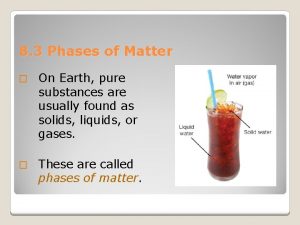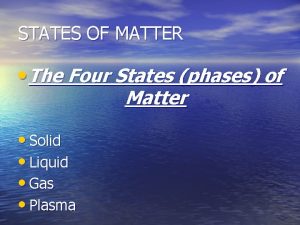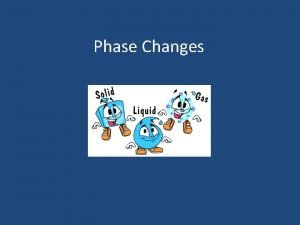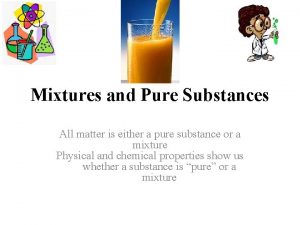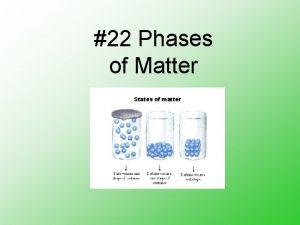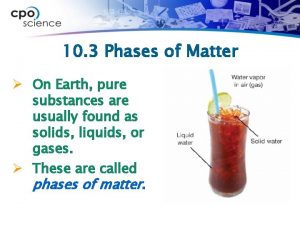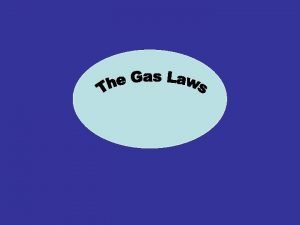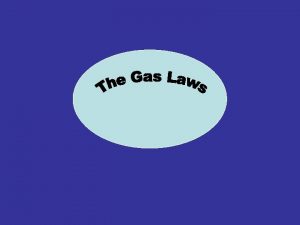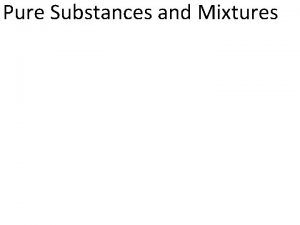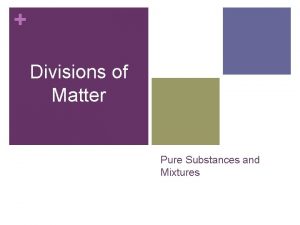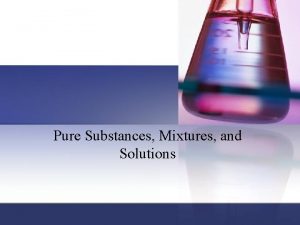8 3 Phases of Matter On Earth pure

















- Slides: 17

8. 3 Phases of Matter � On Earth, pure substances are usually found as solids, liquids, or gases. � These are called phases of matter.

8. 3 The phases of matter �A solid holds its shape and does not flow. �The molecules in a solid vibrate in place, but on average, don’t move far from their places.

8. 3 The phases of matter �A liquid holds its volume, but does not hold its shape— it flows. �Liquids flow because the molecules can move around.

8. 3 The phases of matter �A gas flows like a liquid, but can also expand or contract to fill a container. �A gas does not hold its own volume or shape. � The molecules in a gas have enough energy to completely break away from each other.


8. 3 The phases of matter When they are close together, molecules are attracted through intermolecular forces.

8. 3 The phases of matter The forces in chemical bonds are stronger than intermolecular forces.

8. 3 Intermolecular forces

8. 3 Intermolecular forces � Within all matter, there is a constant competition between temperature and intermolecular forces. � When temperature wins the competition, molecules fly apart and you have a gas. � When intermolecular forces win the competition, molecules clump tightly together and you have a solid.


8. 3 Melting and boiling �The melting point is the temperature at which a substance changes from a solid to a liquid.

8. 3 Melting and boiling �The temperature at which a liquid becomes a gas is called the boiling point.

Notice temperature is constant while ice melts!

8. 3 Melting and boiling points of common substances �Materials have a wide range of melting and boiling points.

8. 3 Sublimation �Sometimes a solid can change directly to a gas when heat energy is added. �This process is called sublimation.

8. 3 Plasma �In the plasma phase, matter becomes ionized as electrons are broken loose from atoms. �The Sun is made of plasma, as is most of the universe, including the Orion nebula.

 3 phases of matter
3 phases of matter Phases of matter concept map
Phases of matter concept map Four phases of matter
Four phases of matter Why isn't it a good idea to classify matter by its phases
Why isn't it a good idea to classify matter by its phases 4 phases of matter
4 phases of matter Whats the study of matter and energy
Whats the study of matter and energy Phases changes of matter
Phases changes of matter Phases of matter
Phases of matter Mechanical micture
Mechanical micture Pure planet earth
Pure planet earth Classification of matter section 1 composition of matter
Classification of matter section 1 composition of matter What makes up the diencephalon
What makes up the diencephalon What is gray matter
What is gray matter Grey matter of nervous system
Grey matter of nervous system Ecological succession
Ecological succession Section 1 composition of matter
Section 1 composition of matter Section 1 composition of matter
Section 1 composition of matter Chapter 2 section 1 classifying matter answer key
Chapter 2 section 1 classifying matter answer key
